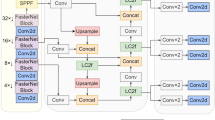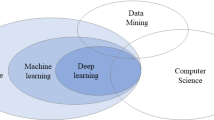Abstract
Micro-cracks are often generated on the concrete structures of long-distance water conveyance projects. Without early detection and timely maintenance, micro-cracks may expand and deteriorate continuously, leading to major structural failure and disastrous results. However, due to the complexity of the underwater environment, many vision-based methods for concrete crack detection cannot be directly applied to the interior surface of water conveyance structures. In view of this, this paper proposes a three-step method to automatically detect concrete micro-cracks of underwater structures during the operation period. First, underwater optical images were preprocessed by a series of algorithms such as global illumination balance, image color correction, and detail enhancement. Second, the preprocessed images were sliced to image patches, which are sent to a convolutional neural network for crack recognition and crack boundary localization. Finally, the image patches containing cracks were segmented by the Otsu algorithm to localize the cracks precisely. The proposed method can overcome issues such as uneven illumination, color distortion, and detail blurring, and can effectively detect and localize cracks in underwater optical images with low illumination, low signal-to-noise ratio and low contrast. The experimental results show that this method can achieve a true positive rate of 93.9% for crack classification, and the identification accuracy of the crack width can reach 0.2 mm.
















Similar content being viewed by others
Availability of data and materials
The data used to support the findings of this study are available from the corresponding author upon request.
Code availability
The custom code used to support the findings of this study is available from the corresponding author upon request.
References
Qi, Z., Zhang, J., Liu, D.: A CNN-based method for concreate crack detection in underwater environments. In: The 2020 Conference ASCE Construction Research Congress, Tempe, USA (2020)
Ling, L.U., Guo-ming, C.H.E.N., Yang, D.: Quantification analysis and measurement of crack feature of underwater structure. Comput. Meas. Control 12(1), 10–12 (2004)
Lattanzi, D., Miller, G.: Review of robotic infrastructure inspection systems. J. Infrastruct. Syst. 23(3), 04017004 (2017)
Kim, J., Yu, S. C.: Convolutional neural network-based real-time ROV detection using forward-looking sonar image. In: 2016 IEEE/OES Autonomous Underwater Vehicles (AUV), pp. 396–400 (2016)
Chen, J., Liu, D.: Bottom-up image detection of water channel slope damages based on superpixel segmentation and support vector machine. Adv. Eng. Inform. 47, 101205 (2021)
Cortes, C., Vapnik, V.: Support-vector networks. Mach. Learn. 20(3), 273–297 (1995)
Montero, R., Victores, J.G., et al.: Past, present and future of robotic tunnel inspection. Autom. Constr. 59, 99–112 (2015)
Mohan, A., Poobal, S.: Crack detection using image processing: a critical review and analysis. Alex. Eng. J. 57(2), 787–798 (2018)
Zakeri, H., Nejad, F.M., Fahimifar, A.: Image based techniques for crack detection, classification and quantification in asphalt pavement: a review. Arch. Comput. Methods Eng. 24(4), 935–977 (2017)
Yeum, C.M., Dyke, S.J.: Vision-based automated crack detection for bridge inspection. Comput. Aided Civ. Infrastruct. Eng. 30(10), 759–770 (2015)
Hsieh, Y.A., Tsai, Y.J.: Machine learning for crack detection: review and model performance comparison. J. Comput. Civ. Eng. 34(5), 04020038 (2020)
Liu, C., Shirowzhan, S., et al.: Evaluation of classical operators and fuzzy logic algorithms for edge detection of panels at exterior cladding of buildings. Buildings 9(2), 40 (2019)
Yang, F., Zhang, L., Yu, S., et al.: Feature pyramid and hierarchical boosting network for pavement crack detection. IEEE Trans. Intell. Transp. Syst. 21(4), 1525–1535 (2019)
Le, T.T., Nguyen, V.H., Le, M.V.: Development of deep learning model for the recognition of cracks on concrete surfaces. Appl. Comput. Intell. Soft Comput. 2021 (2021)
Chen, F.C., Jahanshahi, M.R.: NB-CNN: deep learning-based crack detection using convolutional neural network and Naïve Bayes data fusion. IEEE Trans. Ind. Electron. 65(5), 4392–4400 (2018)
Zuo, X., Dai, B., et al.: Classifying cracks at sub-class level in closed circuit television sewer inspection videos. Autom. Constr. 118, 103289 (2020)
Xue, Y., Li, Y.: A fast detection method via region-based fully convolutional neural networks for shield tunnel lining defects. Comput. Aided Civ. Infrastruct. Eng. 33(8), 638–654 (2018)
Hassan, S.I., Dang, L.M., et al.: Underground sewer pipe condition assessment based on convolutional neural networks. Autom. Constr. 106, 102849 (2019)
Huang, H.W., Li, Q.T., Zhang, D.M.: Deep learning based image recognition for crack and leakage defects of metro shield tunnel. Tunn. Undergr. Space Technol. 77, 166–176 (2018)
Song, Q., Wu, Y., et al.: Real-time tunnel crack analysis system via deep learning. IEEE Access. 7, 64186–64197 (2019)
Li, C., Guo, C., et al.: An underwater image enhancement benchmark dataset and beyond. IEEE Trans. Image Process. 29, 4376–4389 (2019)
Han, M., Lyu, Z., et al.: A review on intelligence dehazing and color restoration for underwater images. IEEE Trans. Syst. Man Cybern. Syst. 50(5), 1820–1832 (2020)
Shi, J., Yin, W., et al.: Automated underwater pipeline damage detection using neural nets. In: ICRA 2019 Workshop on Underwater Robotics Perception (2019)
Ma, J.X., Fan, X.N., et al.: Underwater dam crack image enhancement algorithm based on improved dark channel prior. J. Image Graph. 21(12), 1574–1584 (2016)
Mucolli, L., Krupinski, S., et al.: Detecting cracks in underwater concrete structures: an unsupervised learning approach based on local feature clustering. In: OCEANS 2019 MTS/IEEE SEATTLE. IEEE, pp. 1–8 (2019)
Fan, X., Wu, J., et al.: A novel automatic dam crack detection algorithm based on local-global clustering. Multimed. Tools Appl. 77(20), 26581–26599 (2018)
Zhang, Z., Fan II, X., et al.: An edge detection method based artificial bee colony for underwater dam crack image. In: Biomedical Imaging and Sensing Conference, International Society for Optics and Photonics, vol. 10711, p. 107111R (2018)
Lee, S., Kwon, H., Han, H., Lee, G., Kang, B.: A space-variant luminance map based color image enhancement. IEEE Trans. Consum. Electron. 56(4), 2636–2643 (2010)
Berman, D., Treibitz, T., Avidan, S.: Diving into haze-lines: color restoration of underwater images. In: Proceedings of the British Machine Vision Conference (BMVC), vol. 1, No. 2 (2017)
Chambah, M., Semani, D., Renouf, A., Courtellemont, P., Rizzi, A.: Underwater color constancy: enhancement of automatic live fish recognition. In: Color Imaging IX: Processing, Hardcopy, and Applications. International Society for Optics and Photonics, vol. 5293, pp. 157–168 (2003)
Gatta, C., Rizzi, A., Marini, D.: Ace: An automatic color equalization algorithm. In: Conference on Colour in Graphics, Imaging, and Vision, vol. 1, pp. 316–320 (2002)
Getreuer, P.: Automatic color enhancement (ACE) and its fast implementation. Image Process. Online 2, 266–277 (2012). https://doi.org/10.5201/ipol.2012.g-ace
Rahman, Z.U., Jobson, D.J., Woodell, G.A.: Retinex processing for automatic image enhancement. J. Electron. Imaging 13(1), 100–111 (2004)
Zhang, S., Wang, T., Dong, J., Yu, H.: Underwater image enhancement via extended multi-scale Retinex. Neurocomputing 245, 1–9 (2017). https://doi.org/10.1016/j.neucom.2017.03.029
Yang, F.H., Shi, Q.C., Lan, F.M., Peng, Z.J.: Underwater image enhancement based on color attenuation. J. Ningbo Univ. (NSEE) 33(1), 58–64 (2020)
Yang, M., Sowmya, A.: An underwater color image quality evaluation metric. IEEE Trans. Image Process. 24(12), 6062–6071 (2015). https://doi.org/10.1109/TIP.2015.2491020
Tsai, D.Y., Lee, Y., Matsuyama, E.: Information entropy measure for evaluation of image quality. J. Digit. Imaging 21(3), 338–347 (2008). https://doi.org/10.1007/s10278-007-9044-5
Bouvrie J.: Notes on convolutional neural networks (2006)
Premachandra, C., Waruna, H., Premachandra, H., Parape, C.D.: Image based automatic road surface crack detection for achieving smooth driving on deformed roads. Paper presented at the 2013 IEEE International Conference on Systems, Man, and Cybernetics (2013)
Kingma, D.P., Ba, J.: Adam: a method for stochastic optimization. arXiv preprint arXiv:1412.6980 (2014)
Xu, H., Su, X., Wang, Y., et al.: Automatic bridge crack detection using a convolutional neural network. Appl. Sci. 9(14), 2867 (2019)
Zhang, D., Li, Q., Chen, Y., et al.: An efficient and reliable coarse-to-fine approach for asphalt pavement crack detection. Image Vis. Comput. 57, 130–146 (2017)
Funding
This research was supported by the National Key Research and Development Program of China (No. 2018YFC0406900).
Author information
Authors and Affiliations
Corresponding author
Ethics declarations
Conflict of interest
The authors declare that there is no conflict of interest regarding the publication of this paper.
Additional information
Publisher's Note
Springer Nature remains neutral with regard to jurisdictional claims in published maps and institutional affiliations.
Rights and permissions
About this article
Cite this article
Qi, Z., Liu, D., Zhang, J. et al. Micro-concrete crack detection of underwater structures based on convolutional neural network. Machine Vision and Applications 33, 74 (2022). https://doi.org/10.1007/s00138-022-01327-5
Received:
Revised:
Accepted:
Published:
DOI: https://doi.org/10.1007/s00138-022-01327-5




